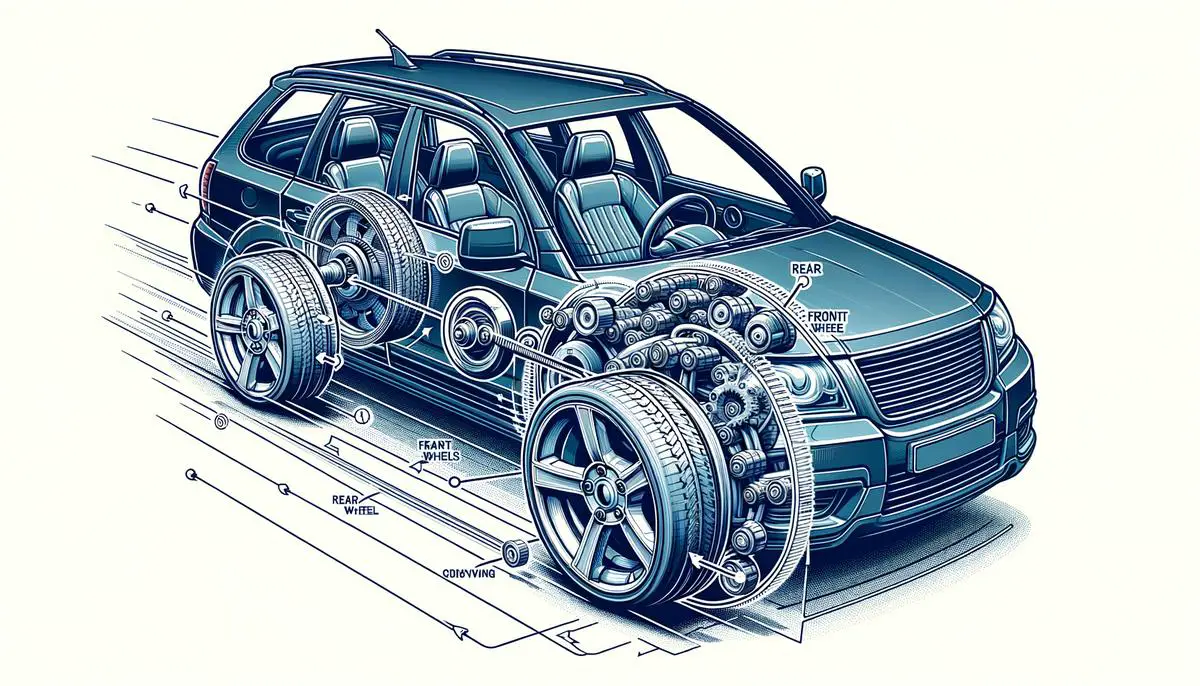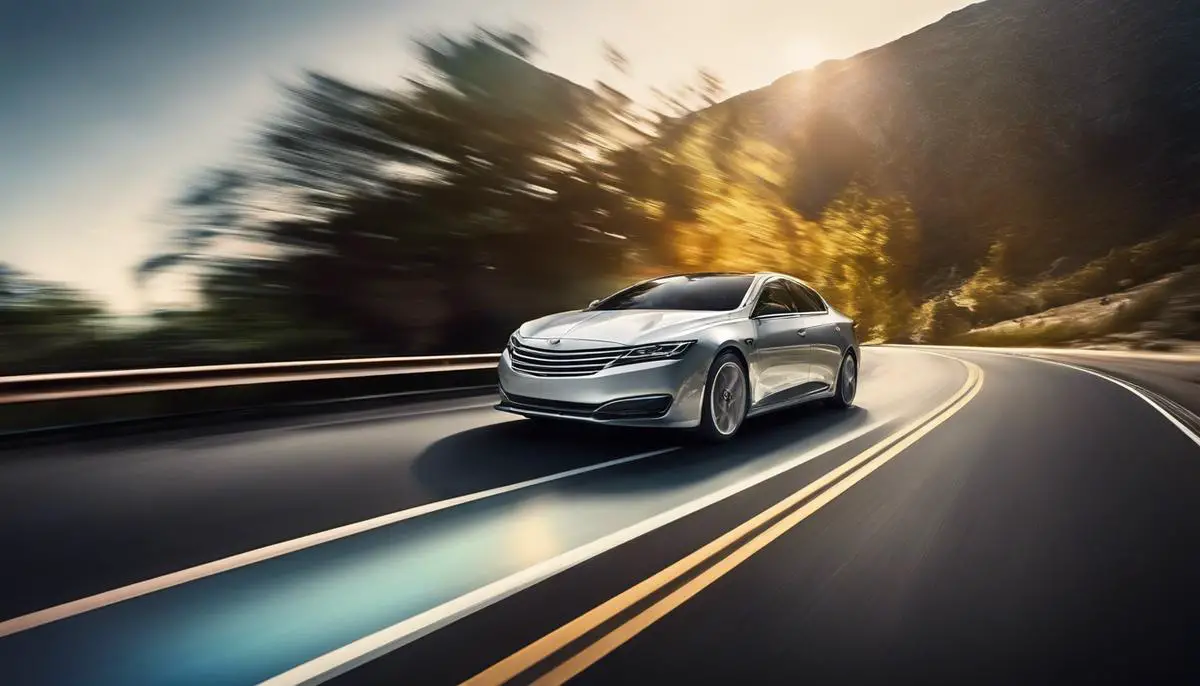All-wheel steering is a technology that’s quietly transforming the way we think about driving dynamics and vehicle maneuverability. By allowing the rear wheels to adjust their angle in harmony with the front, this system introduces a level of agility and stability that enhances the driving experience in a variety of scenarios. From easing into tight parking spots to maintaining control at high speeds, all-wheel steering is reshaping our expectations of what cars can do.
Contents
Understanding All-Wheel Steering
All-wheel steering (AWS) lets the rear wheels of a car adjust their angle, similar to the front wheels. This tweak can make cars more agile, enhance cornering stability, and shrink the turning radius. Let’s peer under the hood to grasp the mechanics of AWS and its perks.
With typical two-wheel steering, only the front wheels swivel. AWS adds an extra layer by involving the rear wheels in the steering process. When you yank the steering wheel, an AWS-equipped car’s backend can also pivot slightly. This action happens through a set of mechanical or electronic components that manage the angle of the rear wheels based on the car’s speed and the steering angle.
At slower paces, these systems can angle the rear wheels in the opposite direction to the front. Think of a crab walking sideways – that’s kind of how your car maneuvers in tight spots. This trick slashes the turning curve, making parking a dream.
But push the gas pedal and surge ahead, the system shifts gears. The rear wheels now toe the same line as the front, literally. At high speeds, turning the rear wheels slightly in the same direction as the front improves stability. It’s like adding extra balance beams to your high-speed run, ensuring you stay straight and true during rapid lane changes or bends.
Modern tech raises the bar for AWS. It wraps up advanced sensors, actuators, and electronic control units into a neat package. The brain behind the brawn is the control unit, which processes heaps of real-time data such as speed, steering wheel position, and yaw rates (how much a car rotates around its vertical axis). This smart system crunches the numbers and decides the optimum rear wheel angle under varying conditions.
The evolution of AWS has been a journey through clunky mechanical setups to sleek, software-driven systems. Earlier models were bulky, adding weight and complexity to vehicles. However, as technology progressed, so did AWS designs, leading to more lightweight and efficient systems integrated into a spectrum of vehicles, from sports cars to luxury sedans.
The beauty of AWS shines in its ability to adapt to different driving scenarios. Slinking into compact parking spots becomes less of a headache, while bombing down a highway feels steadier. The technology bestows a dual personality on cars – nimble at low speeds for urban navigation, stable and composed when you’re tearing across open roads.
Automakers have hopped on board the AWS bandwagon, adapting and refining the technology. Each brand tailors its AWS system to complement a car’s handling and performance ethos. So, while the principle behind AWS remains consistent, driving a sports car outfitted with it versus an SUV offers distinct flavors of control and agility.
In essence, the all-wheel-steering magic lies in giving cars an enhanced poise and precision. From easing into tight parking spots to holding a tight line on fast bends, AWS presents drivers with both comfort and confidence behind the wheel. As automotive technology keeps evolving, the sophistication and adoption of AWS are set to spread wheels far and wide across the road kingdom.

Benefits of All-Wheel Steering
All-wheel steering boosts a car’s agility in crowded parking lots, making life easier when navigating those tight spots. Imagine effortlessly slipping into a space, thanks to the rear wheels angling to complement the front, shaving precious inches off the turning circle. It’s like the car shrinks to fit the gap, a boon for anyone who dreads parallel parking.
On the open road, AWS transforms again, ensuring the vehicle remains stable and glued to the tarmac at higher speeds. This is crucial for safety, especially during sudden swerves to avoid obstacles. The technology steps in, adjusting wheel angles to keep the car on course, lending an invisible hand that steadies and directs.
Fuel efficiency sees a bump too, as AWS can reduce drag by subtly aligning wheels for optimal airflow. This not only cuts down on fuel consumption but also slashes emissions, a step forward in making driving greener without sacrificing performance.
Safety receives a significant boost from all-wheel steering. In situations where every millisecond counts, AWS’s quick adjustments can avert potential accidents. It’s akin to having an extra set of reflexes that kick in, offering more than just speed — they provide a decisive response in critical moments.
Driver confidence soars with AWS. Knowing the car is equipped to handle unpredictable situations adds a layer of reassurance. This technology doesn’t just assist; it empowers, allowing for a driving experience that feels more controlled and secure.
Finally, emergency maneuvers showcase AWS’s true prowess. The ability to dodge an unforeseen hazard with grace and return to stability could be the difference between a close call and a collision. It’s in these heart-stopping instances that AWS proves not just useful but potentially lifesaving, offering a blend of agility and precision when it’s needed most.

All-Wheel Steering in the Automotive Industry
The Porsche 911 Turbo S stands out in the luxury sports car segment, boasting an advanced all-wheel steering system. This marvel of engineering not only sharpens the vehicle’s high-speed stability but also refines its agility around tight corners, showcasing Porsche’s dedication to combining speed with superb handling. Audi’s flagship A8 sedan brings AWS into the realm of luxury sedans, where the emphasis on comfort is as paramount as performance. Here, AWS diminishes the car’s turning radius, making urban navigation a breeze while keeping the ride composed and elegant on highways.
Tesla has not stood by idly in this technological evolution. The all-electric Cybertruck is rumored to feature all-wheel steering, which aims to enhance its off-road capability as well as maneuverability in tight spaces, demonstrating that electric vehicles are not just about clean energy but also about pushing the boundary in automotive technology. Similarly, the GMC Hummer EV introduces a “CrabWalk” feature, an innovative take on all-wheel steering, enabling diagonal movement for unparalleled off-road dexterity, truly showing that AWS can redefine vehicle capability beyond traditional expectations.
Chevrolet’s Corvette C8 brought AWS to an audience that craves the exhilarating thrill of a sports car but at a more attainable price point. Implementing AWS, Chevrolet ensures that awe-inspiring performance doesn’t require sacrificing usability in day-to-day driving. This approach has been pivotal in making high-performance features more accessible to a wider audience.
Mercedes-Benz integrates AWS across its wide array of models from luxury sedans like the S-Class to the spirited AMG GT R. Mercedes utilizes this technology to fine-tune the balance between unparalleled luxury and spirited driving dynamics. Each model with all-wheel steering embodies Mercedes-Benz’s commitment to innovation and class-leading comfort and facilitates a drive experience that’s both exhilarating and serene.
Lamborghini’s Aventador and Huracán both benefit from all-wheel steering systems tailored to enhance the Italian automaker’s hallmark dramatic driving experience. Here, AWS is not just about improving efficiency but is a crucial tool that augments the thrill of driving a potent supercar, making these vehicles as agile in cornering as they are aggressive in a straight line.
Rivian, aiming at revolutionizing the electric vehicle market, incorporates AWS in its R1T and R1S models to create EVs that promise not just eco-friendly travel but also advanced maneuverability and adventure readiness, showcasing that innovation in AWS can serve both performance and practicality in the burgeoning electric vehicle market.
In summary, all-wheel steering is being adopted by car manufacturers across the spectrum, from electric vehicles to luxury sedans, and sports cars to off-road adventurers. Each employs AWS to serve distinct objectives, from enhancing high-speed stability and reducing parking woes to ensuring that even the most luxurious or performance-oriented vehicles can offer an intuitively engaging driving experience. The integration of AWS into modern vehicles is a game-changer, equipping them with a level of versatility and capability that was once deemed a far-off future prospect.

Challenges and Limitations
Though all-wheel steering (AWS) ushers in a wave of innovation for vehicle handling and safety, it introduces a unique blend of challenges and limitations that cannot be overlooked. At the heart of these concerns lies the issue of complexity. AWS systems add a significant layer of technological sophistication to vehicles, integrating sensors, actuators, and complex algorithms to manage the rear wheels’ steering. This complexity does not just affect the vehicle’s design phase but also extends to repair and maintenance, often requiring specialized tools and expertise which can be scarce and expensive.
From a financial standpoint, incorporating AWS technology drives up the sticker price of vehicles. The additional components necessary for AWS functionality, such as extra steering racks and electronic controllers, contribute to a noticeable increase in manufacturing costs. These expenses inevitably trickle down to consumers, potentially making AWS-equipped vehicles less accessible to the average buyer.
Maintenance concerns pair closely with cost issues. Given the intricate nature of AWS systems, routine maintenance can be more elaborate compared to traditional steering setups. Breakdown or malfunctions within the AWS could lead to higher repair bills and longer service times, as not all mechanics possess the know-how to troubleshoot and fix such advanced systems.
For drivers, there’s a noticeable learning curve when first navigating vehicles equipped with AWS. The altered steering response and dynamics can surprise motorists accustomed to conventional systems. For instance, in low-speed scenarios like parking, the rear wheels moving in the opposite direction to the fronts increase maneuverability but can initially feel counterintuitive. At high speeds, complementary steering of the rear wheels enhances stability but may also demand drivers adjust their steering inputs to align with the vehicle’s sharper responses.
Future adoption of AWS technology could be impacted by these factors. Despite its numerous driving benefits, consumer hesitation over costs, potential maintenance headaches, and getting used to the altered driving feel may slow widespread acceptance. Similarly, for manufacturers, the challenge lies not only in justifying the added cost to consumers but also in ensuring reliability and serviceability of AWS-equipped vehicles in the long term.
Engagement with AWS may be catalyzed by advancements in technology that reduce complexity and cost, alongside efforts to educate drivers about the specific benefits and differences in driving dynamics. However, for now, the path forward for all-wheel steering is fraught with hurdles that manufacturers must clear to realize its full potential in enhancing vehicle performance and safety.

Future of All-Wheel Steering
As we shift gears toward the horizon of automotive innovation, the emphasis on synergizing software and hardware within all-wheel steering (AWS) systems reveals an exciting roadmap. The march towards seamless integration points to AWS being more than just an auxiliary feature; it’s poised to become a core element in driving dynamics. This convergence of technology suggests a near future where AWS adapacy transcends current capabilities, morphing into a more intuitive and responsive vehicle trait.
Imagine a scenario where AWS technology, subsidized by advanced learning algorithms, adjusts not just in response to speed or steering input but evolves to anticipate driver behaviour before action is taken. This predictive adjustment would refine vehicle handling, making it safer and more enjoyable for drivers under a wider range of conditions.
Concurrently, hardware developments play a crucial role. Modern vehicles are evolving into technological marvels, with electric powertrains offering unparalleled precision in maneuverability. The integration of electric actuators in AWS systems promises instantaneous responses to steering commands, potentially eclipsing the performance of today’s hydraulic or electric-hydraulic systems.
The autonomous vehicle sector, a fertile ground for innovation, stands to benefit immensely from AWS advancements. Autonomous systems rely heavily on the predictability and steadiness of vehicular motion. By incorporating AWS, autonomous vehicles could achieve superior lateral stability and control, critical for ensuring safety and reliability in driverless operations.
Furthermore, exploring the untapped applications of AWS in heavy-duty vehicles hints at revolutionizing not just passenger cars but the entire spectrum of land transport. From reducing the turning radius of large trucks in urban spaces to enhancing the maneuverability of emergency response vehicles, AWS could significantly impact public and commercial transportation sectors.
This envisioned progression of AWS also brings about considerations for environmental sustainability. Efficiency isn’t just about fuel economy; it encompasses the optimization of spatial movement. For instance, enabling larger vehicles to navigate tighter spaces with ease could lead to less congestion and, consequently, lower emissions. The ripple effects of such advancements could contribute vital chapters in the story of automotive evolution toward greener futures.
On the doorstep of this new era, AWS emerges as a cornerstone technology, promising a fusion of efficiency and exhilaration. As we continue to unravel the potential of this enabling tech, it’s clear that the road ahead for all-wheel steering isn’t just about turning corners; it’s about reinventing them.

In conclusion, all-wheel steering stands out as a pivotal advancement in automotive technology, offering drivers an unprecedented blend of precision and poise on the road. By seamlessly integrating with a vehicle’s existing systems to improve maneuverability and stability, it not only makes driving more enjoyable but also safer. As we look to the future, the continued refinement and adoption of all-wheel steering promise to redefine our driving experiences, proving that sometimes, it’s the subtle changes that make the biggest difference.



